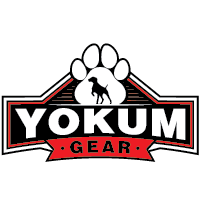When it comes to selecting the ideal crate for your extra large dog, multiple factors come into play to ensure your pet's comfort, safety, and overall well-being. Whether you are crate training a new puppy or providing a secure spot for your adult dog, choosing the right crate size and type is crucial. This guide will help you navigate through the various considerations involved in picking the best extra large dog crate for your furry friend.
Understanding Your Dog's Size and Needs
First and foremost, understanding your dog's size is essential in choosing an appropriate crate. Measure your dog from the tip of the nose to the base of the tail and from the top of the head to the floor while the dog is standing. Add a few inches to each measurement to ensure ample space for stretching out and turning around. Remember, an extra large dog crate is usually suitable for breeds such as Great Danes, Saint Bernards, and Mastiffs.
Materials and Durability
The material of the crate significantly impacts its durability and suitability. Here are the common materials available:
- Wire Crates: These are sturdy, well-ventilated, and provide good visibility. They are easy to clean and often come with dividers for growing puppies.
- Plastic Crates: Typically used for travel, these provide a more enclosed space which can be reassuring for some dogs. They are also durable but can be bulkier.
- Soft-Sided Crates: Made from fabric and mesh, these are lightweight and portable. However, they may not be suitable for dogs who tend to chew or scratch.
- Wooden Crates: These are more aesthetic and can double as furniture. However, they are less portable and usually heavier.
Portability and Storage
If you need to move the crate frequently or intend to use it for travel, consider crates that are easy to assemble and disassemble. Some wire crates can be folded flat, while others come with wheels for easy mobility. Soft-sided crates are generally the easiest to transport but are less durable compared to wire or plastic options.
Comfort and Accessories
Ensuring your dog has a comfortable and inviting space is crucial. Consider adding a crate pad or bed designed for extra large crates. Some crates come with built-in trays that can be easily removed for cleaning. Additionally, accessories like crate covers can provide a sense of privacy and reduce anxiety for some dogs.
Safety Considerations
Ensuring your dog's safety within the crate is paramount. Make sure the crate door latches securely to prevent escapes, and check for any sharp edges or small parts that could pose a risk. If your dog is a chewer, opt for a metal or heavy-duty plastic crate. For dogs prone to separation anxiety, a crate with a more enclosed design could be beneficial.
Training Your Dog to Use the Crate
Once you've chosen the best extra large dog crate, the next step is training your dog to use it. Gradual introduction and positive reinforcement are key. Start by allowing your dog to explore the crate on their own terms. Use treats and toys to create positive associations. Gradually extend the time your dog spends in the crate, always rewarding calm behavior. Patience is essential during this process to ensure your dog feels secure and comfortable.
Conclusion
Choosing the best extra large dog crate for your pet involves a combination of careful measurements, material selections, and thoughtful considerations around your dog's needs and lifestyle. A well-chosen crate can provide a haven for your dog, offering both security and comfort. By taking the time to select the right crate and properly training your dog to use it, you are setting the foundation for a happy and well-adjusted pet.

